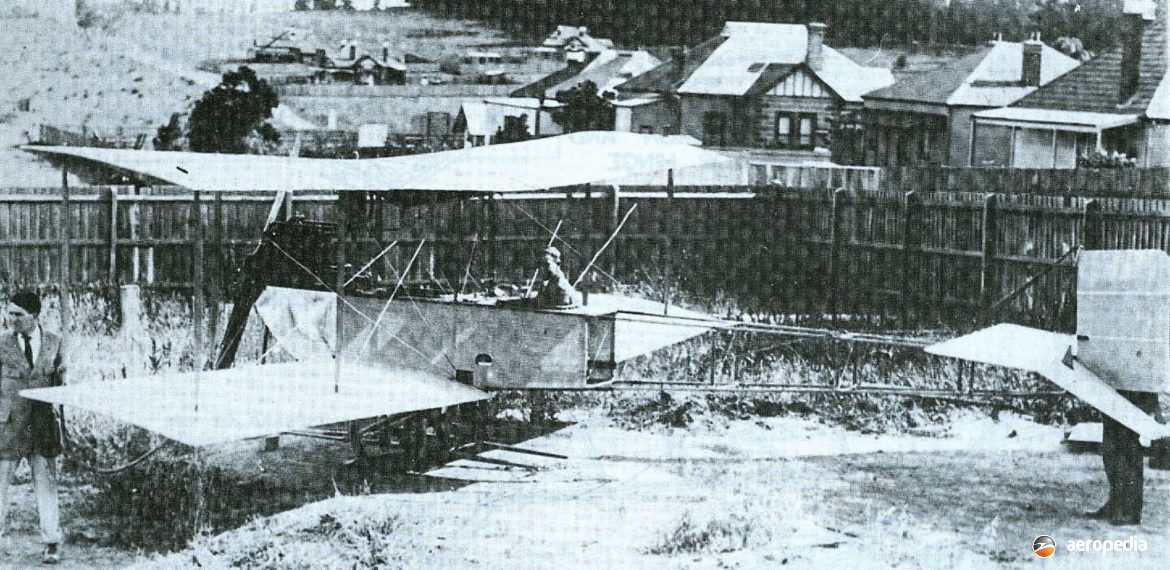Photograph:
Duigan No 2 design c. 1913 (Victorian Science Museum)
Country of origin:
Australia
Description:
Two-seat light biplane
Power Plant:
One 26 kw (35 hp) ENV-D VEE-8 liquid-cooled engine
Specifications:
- Wingspan: 10.36 m (34 ft)
- Chord: 1.37 m (4 ft 6 in)
- Length: 8.95 m (29 ft 4 in)
- Wing area: 28.42 m² (306 sq ft)
- Max speed: 64 km/h (40 mph)
History:
In 1911 John Duigan, whilst in England, ordered an Avro aircraft known as the Avro Type D fitted with a 37 kw (50 hp) Alvaston engine, and in it he gained his Royal Aero Club certificate No 211 at Brooklands in Surrey in April 1912. After selling the Avro, he returned to Australia and, with his brother Reginald, built a new aircraft at Ivanhoe in Melbourne, VIC basing the design on the Avro ENV but making it lighter.
It appears the aircraft was designed in England in co-operation with Alliot Verdon Roe. It was a two-seat tractor biplane which utilised wing-warping for lateral control. The fuselage was made of ash with fabric covering, and the nose cowls were of aluminium. The wing spars and ribs were made of Ash and Poplar, the fittings and the spars being imported from the United Kingdom.
On 17 February 1913 John Duigan commenced flight testing at Keilor, VIC, this consisting of four straight hops, and then a circuit. However, it was caught by a gust of wind and hit the ground, cart-wheeled and was damaged, injuring the pilot. Duigan later stated in view of pressing farm work and other business commitments it had been decided not to rebuild the aeroplane. It seems an attempt was made to sell the aircraft to the Australian Department of Defence in February 1915 but it ended up in a junkyard.

